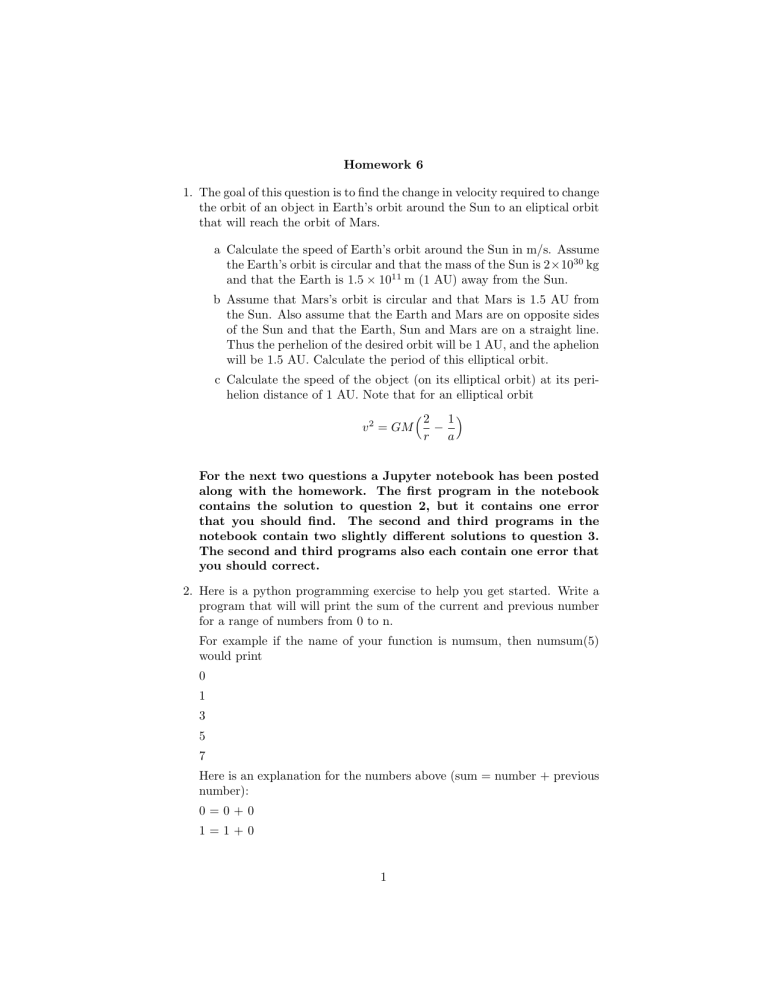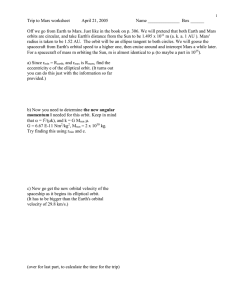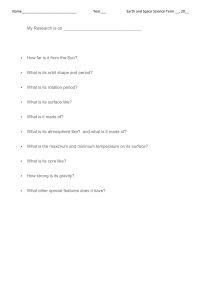
Homework 6 1. The goal of this question is to find the change in velocity required to change the orbit of an object in Earth’s orbit around the Sun to an eliptical orbit that will reach the orbit of Mars. a Calculate the speed of Earth’s orbit around the Sun in m/s. Assume the Earth’s orbit is circular and that the mass of the Sun is 2×1030 kg and that the Earth is 1.5 × 1011 m (1 AU) away from the Sun. b Assume that Mars’s orbit is circular and that Mars is 1.5 AU from the Sun. Also assume that the Earth and Mars are on opposite sides of the Sun and that the Earth, Sun and Mars are on a straight line. Thus the perhelion of the desired orbit will be 1 AU, and the aphelion will be 1.5 AU. Calculate the period of this elliptical orbit. c Calculate the speed of the object (on its elliptical orbit) at its perihelion distance of 1 AU. Note that for an elliptical orbit v 2 = GM 2 r − 1 a For the next two questions a Jupyter notebook has been posted along with the homework. The first program in the notebook contains the solution to question 2, but it contains one error that you should find. The second and third programs in the notebook contain two slightly different solutions to question 3. The second and third programs also each contain one error that you should correct. 2. Here is a python programming exercise to help you get started. Write a program that will will print the sum of the current and previous number for a range of numbers from 0 to n. For example if the name of your function is numsum, then numsum(5) would print 0 1 3 5 7 Here is an explanation for the numbers above (sum = number + previous number): 0=0+0 1=1+0 1 3=2+1 5=3+2 7=4+3 3. This is an exercise to help practice making plots using python. The standard python package for making plots is ”matplotlib”. To use matplotlib you will need to import using a line like the following: import matplotlib.pyplot as plt Explore matplotlib and make the plot below, which is just a plot of the function y = x2 calculated for the points x = [0, 1, 2, 3, 4, 5]. 25 20 Y 15 10 5 0 0 1 2 X 3 4 Figure 1: Plot of y = x2 . 2 5


